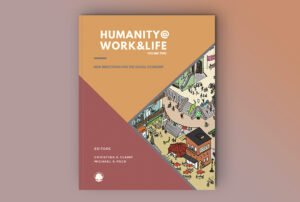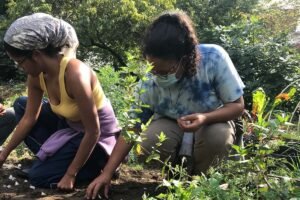Editor’s Note: This article contains sidebars not included in the digital edition. Please purchase a reprint for the full article.
As nonprofits across the country tighten their budgets and try to meet growing community demands, there are surprising lessons to be learned from immigrant communities. Despite stereotypes to the contrary, immigrant children and adolescents have shown astonishing resilience in outcomes despite their low levels of traditional networks and support (i.e., low family socioeconomic status, low English-language proficiency, and low levels of parent education). It is clear that to succeed against the odds, immigrant youth have tapped into distinct community resources.
While ethnic-based organizations make up a relatively small segment of the nonprofit community, one would be hard-pressed to find a nonprofit that does not work with or on issues relevant to immigrant youth. Nonprofits fill various integral roles within immigrant communities—from educational institutions to civil-rights and advocacy groups, from arts and cultural-heritage organizations to religious charities. The success stories of immigrant youth have vast implications for how nonprofits can better capitalize on communities to foster success among American youth. Currently, immigrant-heritage children and adolescents—who are foreign born themselves or U.S.-born to foreign-born parents—are the fastest-growing segment of the youth population in the United States. Frequently, nonprofits view immigrant populations as accumulations of deficits, but for immigrant youth, nonprofits should also see the assets that can be built on and developed. In this article, we raise these questions for nonprofits concerned about immigrant youth:
- Which strengths do immigrant youth demonstrate in schools and in their communities?
- What are the institutional and contextual supports that foster this success?
- Which nonprofit programs and practices are most effective in fostering success among immigrant youth?
As nonprofits across the United States set out to reexamine organizational priorities and as they restructure programs to adapt to shifting budgets and community demands, there has never been a better time for the research community and the nonprofit sector to share knowledge and ideas concerning this significant population of American youth.
So what do we know about this demographic?
Positive Trends in Youth Development
From recent research on immigrant youth, one of the most compelling trends is the immigrant paradox: despite being more likely to grow up in low–socioeconomic status families with little English proficiency and of having parents with low levels of education, immigrant youth show positive outcomes in many areas of development. But with each generation, outcomes decline; by the third generation the positive academic and behavioral outcomes frequently decline to the levels of their native-born, low–socioeconomic status peers.
Many immigrant adolescents initially perform at equal or higher levels in school than do their native-born peers (as measured by GPA and test scores). Again, these outcomes result despite the fact that their families are poorer and less acculturated. Even more striking are these young people’s positive attitudes and behavior. Immigrant adolescents—who are more likely to attend some of the worst-performing schools in the nation—are more likely to report that they “like school,” that their “teachers are good,” and that “school is important to their future” than are native-born students.
In addition, immigrant adolescents are more likely to attend classes and spend substantial time on their homework than do their native-born peers. Moreover, research consistently shows that immigrant youth are significantly less likely to engage in risky and delinquent behavior than are their native-born peers. Specifically, immigrant adolescents and young adults are less likely to smoke, to use illegal substances, to binge drink, to engage in violent delinquency and property delinquency, or to be arrested or incarcerated than are their later-generation peers.
For a few reasons, these findings are useful for the nonprofit community. First, by furthering their understanding of resilient immigrant youth, nonprofits can contribute to a more positive perception of immigrant children and adolescents. Second, these findings have vast implications for the ways in which immigrant youth—despite many obstacles—have tapped into community and family resources to achieve success. By understanding how immigrant youth capitalize on resources to achieve success, institutions can prioritize programs and goals to more effectively support positive development across immigrant generations. In short, there is something good happening in immigrant families; we need to learn from these examples so that as these children acculturate, these positive dynamics can continue.
Building Ethnic Community Capital
Several lines of research suggest that community capital plays a large role in the educational and behavioral trajectory of an immigrant child. Communities with tightly woven ethnic social networks and shared knowledge about school systems and opportunities for educational advancement are protective and catalyzing forces in the academic and behavioral development of immigrant youth. Research suggests that community capital works in several ways. At the most basic level, when community members are well connected through local institutions and shared goals, they form a strong safety net for children and adolescents in the community. A strong social fabric better enables adults to monitor their children and reinforces family and community values throughout the community.
Recent ethnographic research on several Chinese immigrant communities provides an example of how this community capital operates. Brown University’s conference on the immigrant paradox presented work on the ways in which Chinese immigrant parents band together to prepare children for each educational transition.1 Parents share knowledge on the best school systems, the expectations of schools, and the necessary steps to advance within the American educational trajectory. They not only share knowledge about these systems but also extend the system through self-organized after-school and weekend enrichment programs, test preparation courses, and the organization of community-based scholarship funds. They receive support from community nonprofits such as the Chinatown Consolidated Benevolent Association and the Jinying (Zhongshan) Merchants Association Chinatown in Los Angeles.2 These communities may not have many high–socioeconomic status households or easy access to high-performing community schools, but they gain a solid footing from understanding the routes and mechanisms to higher education and a strong network of social ties within the community.
Community-based nonprofits have historically played—and continue to play—a large part in creating this kind of community capital. The following programs have been most effective. Ethnic-based parent groups. The creation of community-planning groups, parent coalitions, parent information sessions about educational opportunities for children, and parent-organized tutoring and college preparation programs.
Community-based cultural-heritage programming. The development of cultural-heritage programming that is specific to ethnic groups within the community. This includes festivals and fairs, language classes, cultural dance and performance groups, and publicly available cultural resource centers.
Continuing-education programs for parents. Research suggests that immigrant parents of school-age children who continue their education can better support their children through educational transitions. Programs that support parents in continuing their education—through information sessions, funding opportunities, and enrollment assistance—connect parents within the educational community and expand community knowledge surrounding the American educational system and higher education. At Dorcas Place—a community literacy nonprofit that works primarily with immigrant adults—programs such as Bridge to College provide immigrant parents with the financial incentive (e.g., a semester free at a community college) and assistance with admissions and financial aid to successfully reenter the educational system.3
Supporting Cultural Bonds
Among first-generation immigrant families, evidence suggests that less-acculturated children and adolescents show more positive outcomes than do more acculturated youth. In other words, children and adolescents who speak only English and who have been in the United States for a longer period of time indicate more negative outcomes across a variety of developmental areas. In a certain respect, “becoming American” places immigrant youth at developmental risk.
There is no one simple explanation for this finding, but it’s clear that immigrant youth do best when they share cultural resources and languages with their parents. It is natural that immigrant children and parents acculturate at different rates; attending U.S. schools facilitates a rapid learning curve in a child’s adaptation to American youth culture and attainment of English-language proficiency. While in many respects, this is an inevitable and positive process, the problem arises when children lose proficiency in their parents’ culture and language and gain a new cultural framework. The loss of a shared family cultural framework—and in many cases, a shared language—can create growing distance, misunderstanding, and conflicts between immigrant parents and their children. In an interview study of immigrant parents and their children in Rhode Island, many parents discussed their fears that they were losing a connection with their children or that their children had pushed away from them as they acculturated to American peer groups. Parents sensed that their children had become embarrassed by their parents’ language and culture because it made them stand out in school.
With growing distance and conflict in the parent-child dynamic, immigrant children and adolescents are at risk of losing access to a critical family-based resource: their parents’ strong educational values and expectations. In national and regional data, high educational expectations among immigrant parents have been well documented. In our recently published volume Immigrant Stories, we discuss how immigrant parents of Cambodian, Dominican, and Portuguese backgrounds place a strong focus on the educational goals of their children. Parents of these heritages expect that their children will not only attend college but also enter fulfilling vocations as physicians, engineers, and lawyers, for example. This is best understood considering that many immigrant parents come to the United States with the educational goals of their children in mind. When immigrant parents and their children lose these shared values and successful routes of communication—primarily shared through maintaining fluency in the native language—this strong asset is diminished.
These findings support the creation of programming to aid youth not only in their adaptation to American classrooms and communities but also in forming strong and lasting connections to their family’s culture and language. Consider the following kinds of programs as positive support systems.
Parent-child English as a Second Language programs. Programs that offer simultaneous language classes for parents and their children promote a greater sense of collaboration and common ground within the language-learning process. An example of how such simultaneous programming might function is English for Action, a Rhode Island–based nonprofit that focuses on English skills as a means to civic and personal empowerment. At English for Action, parents participate in dynamic English-language classes while their children attend reading and writing courses in neighboring classrooms. English for Action also encourages community organizing through the inclusion of community projects (neighborhood watches, recycling campaigns, and so on) and civic engagement (e.g., lobbying for community issues) as part of the curriculum.4
Sign up for our free newsletters
Subscribe to NPQ's newsletters to have our top stories delivered directly to your inbox.
By signing up, you agree to our privacy policy and terms of use, and to receive messages from NPQ and our partners.
Cultural awareness children’s programming. Ethnic-based out-of-school programs promote the maintenance of home language and cultural traditions and foster pride and a connection to cultural history and community networks. These types of programs enable children to engage with their communities in novel ways and can open communication between older members of the neighborhood and youth. One example of this type of programming comes from work done in conjunction with the John Nicolas Brown Center. Local graduate students developed an oral history project in the largely Portuguese and Cape Verdean neighborhood of Fox Point in Providence, Rhode Island, where elementary and middle-school students interviewed longtime residents, photographed community landmarks, and created a community exhibit capturing the cultural history of the neighborhood.5
Encouraging bilingualism and biculturalism. We know that immigrant children and adolescents show the most positive outcomes when they are fluent and comfortable in their homes as well as in the mainstream language and culture. Programs and institutions should thus encourage and institutionalize biculturalism and bilingualism.
Encouraging Peer Groups
There is some evidence that regardless of the student demographics in the schools they attend, immigrant children are more likely to befriend other immigrant children than are later-generation immigrant-heritage students. This kind of self-segregation may be perceived as worrisome by preventing access to English language or mainstream cultural resources. But according to research, as in the case of maintaining cultural bonds in the family, having a high percentage of co-generational friends is a strong support for immigrant youth and may partially explain the first generation’s advantage in academic success.
Immigrant peers reinforce the educational focus of families and the high expectations for academic success and behavior stressed within immigrant families and communities. Co-generational peers provide a continuation of family values, whereas native youth can provide a contradiction. This is further evidenced by the fact that immigrant youth are more likely than native-born youth to report that their friends help them with homework or encourage them to do well in school. The protective effect of co-generational peers may be especially salient in underperforming schools, where the peer culture may devalue striving in school and where academically focused students may be ostracized by peers.
Youth programming is already a large component of many community-based nonprofits. There are a couple of ways to strengthen such programming to benefit immigrant youth.
Peer tutoring and ethnic-based educational programs. Connecting immigrant youth at each stage of schooling (at elementary, middle, and high-school levels) through educational programs and peer-to-peer tutoring fosters collaboration and group investment in educational goals. It can also reinforce peer-to-peer educational supports within immigrant communities. The Greater Boston Chinese Cultural Organization provides a vast network of resources for Chinese Americans in the Boston metropolitan area, such as local after-school programs that combine Chinese language and cultural appreciation classes with tutoring in math, science, and English.6 These classes bring Chinese children and adolescents together in a cultural community as well as through shared educational goals, making it a powerful support for immigrant youth.
Ethnic-based leadership clubs. Membership and leadership are significant to positive adolescent development. This is especially true for immigrant youth, who—as they navigate between home and mainstream cultures and language—feel isolated in schools or their community. At the Brown University conference, William Perez of Claremont University noted the propensity of even undocumented Latino youth to be highly engaged in community-service activities that help other undocumented youth and that contribute to high levels of civic engagement.7
Capitalizing on Positive Trends
As financial resources are stretched in communities throughout the country, the need for effective nonprofit policy has never been more pressing. While the challenge is great, there is good reason to be hopeful when it comes to nonprofits’ ability to continue to effectively support the successful trajectories of American youth. Research on resilient trends in immigrant youth populations confirms that financial resources are far from the only—or even the most important—resources in American communities.
There has never been a better or more necessary time for nonprofits to capitalize on the positive and protective processes already operating in American communities: the formation and maintenance of dense social ties, the transmission of community-held information between residents, the celebration and sharing of community heritage, and the reinforcement of positive, educationally focused youth networks.
Highlighting the strengths of immigrant children and adolescents is not to ignore the enormous obstacles that many immigrant children face; nor is it to ignore the immigrant children and adolescents who slip through the cracks of our schools and communities. While foreign-born youth are showing surprising resilience, the rapidly declining outcomes of their later-generation youth is certainly cause for concern. Rather, by focusing on resilience in immigrant youth, we not only affirm these youth as a positive and permanent addition to the United States but also better understand how to support each generation of immigrant youth. Nonprofits have historically played—and continue to play—an integral role in supporting immigrant communities and the lives of immigrant children and adolescents. There is now tremendous opportunity for the nonprofit community to learn from these communities. Together they offer a compelling model to cultivate resilience from economic hardship and optimism out of tremendous obstacles.
Endnotes
1. The Immigrant Paradox in Education and Behavior: Is Becoming American a Developmental Risk?, presentation delivered at A National Conference on Children & Adolescents from Immigrant Families, March 6–7, 2009 (www.brown.edu/Departments/Education/paradox/agenda/).
2. Min Zhou, Segmented Assimilation and the Asian Paradox: The Multifaceted Educational Experiences of Chinese and Vietnamese Children (www.brown.edu/Departments/Education/paradox/documents/Zhou.pdf).
3. Dorcas Place, Bridge to College Web page (www.dorcasplace.org/programs/collegeprep.html).
4. English for Action Web site (www.englishforaction.org/en/Home.php).
5. Brown Alumni Magazine (www.brownalumnimagazine.com).
6. Greater Boston Chinese Cultural Organization site (https://www.gbcca.org/).
7. William Perez, Academic Resilience and Civic Engagement Patterns of Undocumented Latino Students, 2009 (www.brown.edu/Departments/Education/paradox/documents/Perez.pdf).
To comment on this article, write to us at feedback@npqmag.org. Order reprints from https://store.dev-npq-site.pantheonsite.io, using code 160211.








